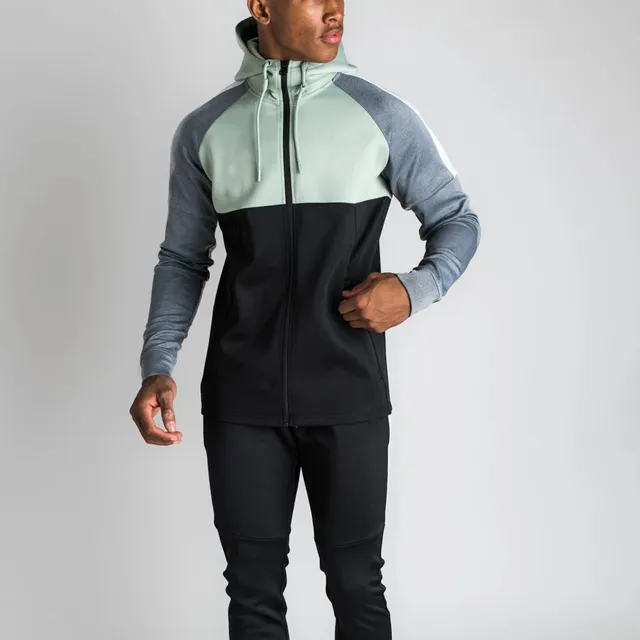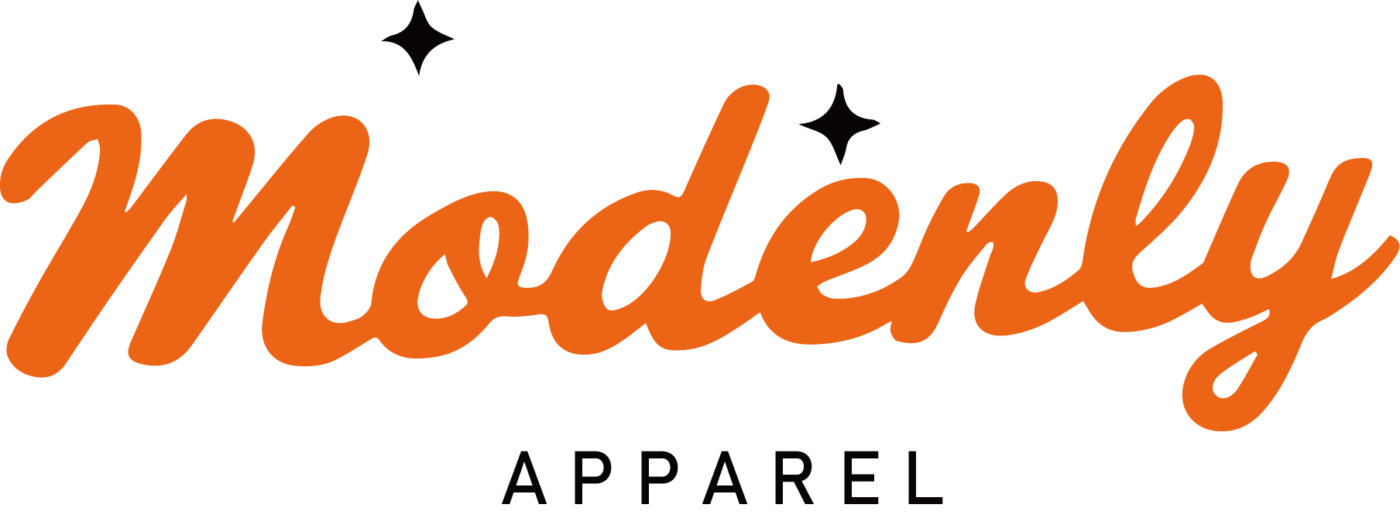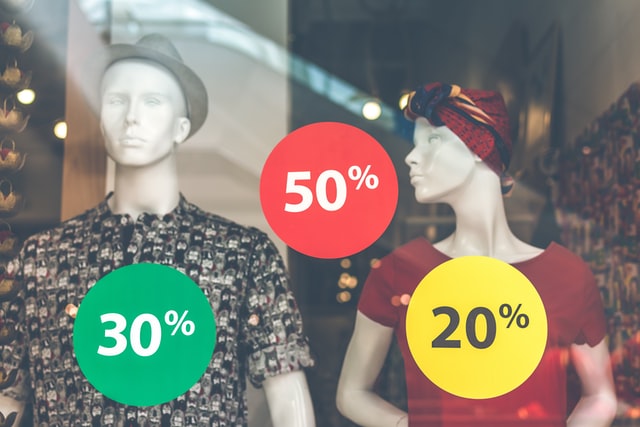健康志向の高まり、スタイリッシュなスポーツトレンド、そしてアスレジャー愛好者の増加に後押しされ、世界的なアクティブウェアビジネスは今なお爆発的な成長を続けている。この活気ある分野への参入、あるいはその分野での拡大を目指す流通業者や再販業者にとって、アクティブウェア・アパレル・メーカーへの大量発注は、貴重なチャンスを引き出す可能性がある。しかし、大規模な衣料品メーカーとの交渉は、決して容易なことではありません。倫理的な調達、デザインの変更、製造スケジュール、素材の品質など、あなたの決断次第でブランドの評判が落ちることもあれば、高まることもある。

一流のスポーツウェアを大量に提供することで、顧客層がスポーツジム、ウェルネスイベント、企業チーム、トレンド志向の店舗などであっても、頼りになるサプライヤーとなることができる。本記事では、アクティブウェア・メーカーとのパートナーシップを成功させるために、初期計画からサプライヤーの吟味、生産上の課題管理まで、重要な検討事項を解説する。価格、品質、コミュニケーションに基づいた強力な計画は、市場の興味を引き、消費者をリピーターにする面白いスポーツウェアのデザインへの道を開くだろう。
以下では、B2Bディストリビューターや再販業者が大量生産される大型アパレルについて知っておく必要があることをすべて網羅しています。初めての大量仕入れを検討している初心者であれ、新鮮なアイデアを求めているベテランのプロフェッショナルであれ、これらの視点は、アクティブウェア衣料品メーカーと大胆に交流することを可能にし、最終的に貴社を継続的な拡大と認知へと導きます。
市場の展望バルクアクティブウェアが重要な理由
成長と消費者需要
過去10年間で、フィットネスに対する消費者の関心は急上昇し、スポーツギア業界の驚異的な売上を後押ししてきた。人々は、日々の快適さだけでなく、激しいトレーニングを促進するウェアに引き寄せられる。ショッピングから朝のジョギングまで、アスレチックウェアは一般的なユニフォームとなった。バルクレギンス、スポーツブラ、その他のアスレジャーの基本は、安定した需要のために卸売業者にアピールする。
さらに、スポーツチーム、企業のウェルネス・イニシアチブ、フィットネス・イベントなどの企業は、パーソナライズされたウェアを日常的に求めており、プレミアム製品を提供できる企業にとっては継続的な収益となる。大量生産と特殊なデザイン要件の両方を管理できるアクティブウェア・アパレル・メーカーと提携することで、貴社はこうした継続的なコラボレーションの主要サプライヤーとしての地位を確立することができる。
ブランドイメージへの影響
アクティブウェアは、消費者が快適性、耐久性、スタイルを求める競争の激しい市場です。特にオンライン評価や口コミが主流の市場では、大量出荷のいずれかがこれらの点で失敗すれば、その反動でブランドはたちまち傷つく可能性があります。生地の革新性、正確なサイジング、一貫した品質を優先する評判の良いアクティブウェアメーカーと協力することで、ブランドの認知価値を大幅に高めることができます。
多様なセグメントにおける機会
アクティブウェアは、従来のフィットネス界にとどまらず、教育機関(大学のアスレチックプログラム用のテーラードウェアなど)、ホテルビジネス(ウェルネスリゾートのスタッフユニフォーム)、企業イベント(従業員のチームビルディングセッション)などでも利用されている。バルクアクティブウェアを提供することで、複数のバイヤーグループを惹きつけることができ、ポートフォリオの幅が広がり、単一種類の顧客に関するリスクを軽減することができる。
アクティブウェア・メーカーへの大量注文の計画
要件の定義
アクティブウェア・メーカーにアプローチする前に、以下のことを明確にしよう:
- 製品範囲:レギンス、スポーツブラ、タンクトップ、それとも頭からつま先までの服装に重点を置く?
- デザインの複雑さ:カラーブロック、プリントグラフィック、メッシュのような質感のある生地は必要ですか?
- ターゲット・オーディエンス:供給先はプロアスリートですか、それともカジュアルな愛好家ですか?若年層か高齢層か?
このように明確にすることで、可能性のあるメーカーがあなたのビジョンを確実に理解し、最適な素材や仕上げ方法、デザインの変更について指導することができる。
予算と価格戦略
せっかくのクリエイティブなコンセプトも、不適切なコスト構造では台無しになりかねない。アクティブウェア・メーカーに発注する際は、以下の点を考慮すること:
- ボリュームディスカウント:大量注文は一般的に単価を下げるが、過剰在庫の可能性に注意。
- 素材のアップグレード:プレミアム素材(吸湿発散性、防臭性など)は、価格が高くなることが多い。
- 隠れた料金:サンプリング費用から輸送費、輸入関税まで、予想外の出費があると予算が膨らむ可能性がある。
利益率を維持し、最終顧客が購入しやすい価格を維持できるかどうかは、明確な価格プランが定義されているかどうかにかかっている。
生産スケジュール
大量注文の場合、生地調達、パターン開発、裁断、縫製、仕上げ、梱包など、多段階の作業が必要になることがある。発売日が迫っている場合(例:大きなスポーツイベントやホリデーセール)、見込みのあるアクティブウェア製造業者とリードタイムについて十分に話し合いましょう。通関、輸送、原材料の入手などによる予期せぬ遅れを考慮し、直前になって不安にならないよう、カレンダーにバッファータイムを設けておく。
アクティブウェア衣料品メーカーの評価:主な要因
製造能力と経験
アクティブウェア・メーカーを吟味するときは、スポーツウェアの製造に関する専門知識を確認しよう。カジュアルウェアのメーカーが、フラットロック縫製やパフォーマンスファブリック仕上げ(擦れを軽減するためにアスレチックウェアに採用されることもある)を完全に知らないかもしれない。調べてみよう:
- 機械と技術:高度なミシン、熱転写プリンター、昇華装置はあるか?
- 関連ポートフォリオ:過去に手がけたアクティブウェアのサンプルや参考資料を請求する。
- イノベーション・アプローチ:新しい生地の開発やデザイントレンドにどのように適応するかを評価する。
品質管理プロセス
アクティブウェアの大量生産は、生地の完全性、色の正確さ、縫製の欠陥を際立たせる。早期に発見されなければ、1つの不適切な縫い目が何千回も再現される可能性がある。評判の良いアクティブウェアメーカーは、厳しい品質チェックを実施しています:
- 入荷検査:生地ロールの色の均一性と欠陥の評価。
- イン・プロダクション監査:縫い目の張力、ロゴの配置、サイズの正確さなどをスポット的にチェックすること。
- ランダム・サンプリング:完成したバッチからアイテムを取り出し、各ピースが合意された仕様に合致していることを確認する。
品質管理手順の詳細をすぐに尋ね、特に大量に購入する場合は、メーカー訪問や外部監査を計画することを考える。
倫理的かつ持続可能な実践
消費者がエコ認証に関心を寄せる市場では、アスレチックウェアメーカーが倫理的な労働基準や生態系に優しい方法に従っているかどうかを確認することは、大きなセールスポイントになるかもしれません。そのためには、次のような確認が必要だ:
- 認証:WRAP(世界的責任認定生産)やGOTS(グローバル・オーガニック・テキスタイル・スタンダード)のような認定されたシールを、コットンベースの製品に使用しているかどうかを確認する。
- 廃棄物および水管理:クローズド・ループ・システムを採用し、水を再利用したり、より低負荷の染色方法を採用したりするメーカーもある。
- 公正な賃金と安全な労働条件:従業員の福利を保証する職場監査や社会的コンプライアンス・プログラムについて問い合わせること。
倫理的で環境に配慮したブランドという位置づけは、強力なマーケティング上の強みとなっている。
アクティブウェアの一括デザインとカスタマイズ
正しい生地選び
見た目だけでなく、パフォーマンス素材は快適性、サポート性、寿命に直接影響します。さまざまな素材の選択肢を提供するアクティブウェア・アパレル・メーカーと協力することで、成功に導くことができる。よく選ばれているのは
- ポリエステルとスパンデックスの混紡:吸湿発散性と4ウェイ・ストレッチで有名。
- ナイロン・スパンデックス:滑らかな仕上がり、圧縮能力、速乾性を提供。
- オーガニックコットン混紡:より自然な肌触りで、軽いアクティビティやラウンジウェアに最適。
プロのアスリートは最大限の着圧を求めるかもしれないし、カジュアルなジム通いは柔らかさを最優先するかもしれない。
パターンとブランド・テクニック
バルクのアクティブウェアを差別化するには、多くの場合、特徴的なプリント、色、またはロゴに頼ることになる。主な方法は以下の通り:
- 昇華印刷:生地に染料を浸透させ、鮮やかで長持ちするデザインを実現。大きな柄や総柄プリントに最適。
- 刺繍:小さなロゴやレタリングには最適だが、伸縮性の高い部分には不向きかもしれない。
- スクリーン印刷と熱転写:両者とも、鮮明なブランディングをスケールごとに再現することは可能だが、一貫したアライメントを確保するには、細心のQCが必要だ。
多色スクリーンプリントやフルカバータイプの昇華は、製造コストを増加させるが、デザインの複雑さとコストとのバランスによっては、プレミアム価格を正当化することもできる。
フィットの一貫性とサイジング
アクティブウェアは、快適性、サポート性、美しいシルエットを提供しながら、様々な体型にシームレスに対応しなければならない。あらゆるサイズに対応するパターン・グレーディングに長けたアスレチック・ウェアの生産者と協力すること。市場の標準を表す徹底したサイズ表を提供する。
- ユニセックス vs. 男女別:ウエストとヒップの比率、股下、ライズなどをお客様の好みに合わせて調節してください。
- プラスサイズ:包括的な市場に対応する場合は、衣服の完全性を損なうことなく、メーカーが幅広いサイズに対応できることを確認する。
- マルチ・リージョンの考察:米国と欧州やアジアではサイズが異なる場合があります。国際的に販売する場合は、地域固有の基準を明確にしましょう。
正確で一貫したフィット感は、最終消費者の忠誠心を育み、再注文率を向上させ、ブランドの信頼を築く。

生産、ロジスティクス、コミュニケーションの管理
明確なタイムラインとマイルストーンの設定
プロジェクトのスケジュールを、選択したアクティブウェア・アパレル・メーカーと共有し、誤解や納期遅れを防ぎましょう。概要
- 承認期限例:プロトタイプのレビューと最終決定。
- プロダクション・キックオフ:生地やトリムの在庫がある場合。
- 本番中盤のチェックポイント:デザインの修正や色の微調整に対応。
- 出荷・配送目標:輸送時間、通関、倉庫保管を考慮する。
Eメール、電話会議、プロジェクト管理プラットフォームなどを通じた定期的なチェックインによって、透明性が促進され、問題の芽を摘むことができる。
品質保証の監督
メーカーが強力な品質管理手順を持っていたとしても、自社で抜き取り検査を行うべきである。特に、わずかな欠陥が大きな経済的損失につながりかねないような大口注文の場合は、可能な限り現地での検査を計画するか、現地の第三者機関に依頼する。 評価する:
- ステッチの一貫性:糸のほつれ、裾の不揃い、縫い残し。
- 色の均一性:すべての部品が必要なパントンまたは参照コードに一致することを確認すること。
- 梱包精度:正しいラベル、サイズ、バーコード。
ミスを早期に発見することで、手戻りの時間、余分な出荷コスト、ブランドを傷つけるクレームの可能性を減らすことができる。
物流・配送
大量の衣料品は重く、場所もとるので、運賃は大きな項目となる。輸送を自社で行うか、アクティブウェア・メーカーがサプライチェーンを通じて行うかを選択する。重要な要素は以下の通りである:
- 運賃方法:海上輸送は経済的だが時間がかかる。
- インコタームズ:関税、税金、運送保険の責任を明確にする。オプションとして、FOB(Free on Board)、CIF(Cost, Insurance, and Freight)、DDP(Delivered Duty Paid)がある。
- 倉庫ハンドリング:複数の場所や小売店に商品を発送する必要がある場合は、配送の調整を行う。
輸送時間が長くなる季節的な輸送急増(休暇前など)に対応できるよう、早めに計画を立てる。
ディストリビューターにとってのコストと価格設定
出来高レバレッジ
通常、大量注文は単価を安くすることができるが、あまりに大量に注文を出すと、在庫が余ってしまう危険性がある。アンカー顧客からの再注文の可能性を考慮し、注文量を合理的な売上見込みに合わせましょう。もし、あなたの数がボーダーライン上にあるのなら、フィットネスウェアメーカーとフレキシブルなプランについて話し合いましょう。中には、バルク価格を完全に失うことなく、部分的に再注文できるような段階的な製造スケジュールを提供してくれるところもあります。
支払条件の交渉
支払いの仕組みはメーカーごとに異なる。一般的なアプローチには以下のようなものがある:
- 保証金 + 残高:生産開始のための手付金(多くの場合30-50%)で、残金は完成時に支払われる。
- 信用状:高額の注文に便利。サプライヤーが条件を満たせば、銀行が支払いを保証する。
- 分割払いプラン:特に複雑で長期にわたるプロジェクトに有効です。
サンプルの料金から梱包の追加料金まで、すべての料金を明確にし、予算の浪費を防ぐ。
付加価値の織り込み
生産だけでなく、優れたパートナーは、デザインの支援、生地の調達、ブランドの信頼性を高めるコンプライアンス認証などを提供してくれるかもしれない。このようなサービスには初期費用がかかることもあるが、その結果生じる差は通常、価格を正当化する。こうした付加サービスは、ブランドのポジショニングを補完するものであれば、マーケティング・メッセージと販売の可能性を強化する。
アクティブウェアコレクションのポストプロダクション
ローンチ戦略
大量注文が届いたら、連携した展開を計画することで、インパクトが増幅します。取り組む:
- ティーザー・キャンペーン:ソーシャルメディアやEメールマーケティングで期待感を高める。
- インフルエンサー・パートナーシップ:フィットネストレーナーやアスリートは、実際の現場であなたのウェアをデモンストレーションすることができます。
- バーチャルローンチイベント:ライブストリームで製品の特徴を紹介し、購入希望者からの質問やフィードバックを募る。
このようなプロジェクトは注目を集め、製造経費の早期回収に貢献し、ブランドの認知度を高める。
品質と革新性をアピール
展示会、ポップアップ・ブース、B2B会議などでの対面販売 は、通常、販売業者の助けになる。サンプルを持参し、見込み客に生地を触ってもらったり、縫い目を調べてもらったり、しゃがんでも大丈夫なレギンスを試してもらったりしましょう。ウェブサイトでは、高品質な画像やユーザーの声を掲載することで、デジタルリサーチを好む見込み客にインパクトを与えることができます。カラー高速プリント、最先端の湿度コントロール、包括的なサイジングなど、自社の製品の特徴を強調しましょう。
永続的な関係を築く
特に、消費者に好評であれば、高品質のアスレチックウェアは再注文につながることが多い。オープンなコンタクトラインを維持し、迅速な再注文の選択肢を提供し、新しいトレンドや改訂された技術を知らせる。例えば、新しい吸湿発散糸や改良されたパターンなどは、顧客が提供する製品の幅を広げるきっかけとなる。また、満足した消費者はブランド・チャンピオンになり、あなたの販売方法を同僚に勧めるかもしれない。
結論
刻々と変化するアクティブウェア市場でニッチな市場を見出すには、大量生産されるウェアを注意深く管理する必要がある。消費者に愛され、店舗に再注文されるアパレルを提供するには、優れた経験、強力な品質管理、持続可能な慣行を持つアクティブウェア・アパレル・メーカーと戦略的な関係を築く必要がある。重要な要素としては、具体的な目標の設定、綿密な予算管理、最高のパフォーマンスを発揮する素材の選択、製造工程全体における完璧な品質の保証などが挙げられる。
熱心な消費者、より高い収益、洗練されたトレンドに精通したアスレチックウェアを提供することで知られる評判など、この爆発的な市場で存在感を確立または拡大したいと考えているディストリビューターや再販業者にとって、そのメリットは大きい。入念な準備と誠実なチームワークが、あなたの成功を後押しします。このような展望を調査する準備ができたら モデンドットコム 生地選びからデザイン決定、効率的な大量注文生産まで、業界をリードするメーカーとのつながりをお手伝いします。ブランドの次の飛躍が待っています。
よくあるご質問
なぜアクティブウェアの専門メーカーが大量受注に重要なのか?
専門メーカーは、パフォーマンスウェアの大量生産に必要なツールと知識を持っています。洗練された生地加工、正確なフィット基準、厳格な品質管理など、大量生産されるアクティブウェアが一貫性と機能的価値を維持できるよう、彼らは熟知している。
異なるメーカーのコストを比較する最善の方法は?
生地の選択、プリントや刺繍の費用、送料やサンプリング料などの可能な追加料金を含む詳細な料金を入手する。これらの提案を、各メーカーの実績や対応力などの基準と比較する。少し高めの見積もりの方が、サービスが良く、製造リスクが少ない場合もあります。
メーカーの品質管理はどのように確認できますか?
内部監査、外部認証、工程説明などの情報を求める。可能であれば、現場視察を計画するか、外部の検査会社と契約して抜き打ち検査を行う。一貫して優れた仕事をしていることを裏付けるために、顧客の推薦状や紹介状を確認する。
有利な価格を得るためには、最低注文数量が多くないといけませんか?
アスレチック・アパレルのメーカーのMOQはかなり異なっている。メーカーによっては、少量生産が可能なところもあるが、通常、大量に購入すると単価が安くなる。数量がそれほど多くない場合は、部分生産やフレキシブルな取引に目を向け、経費を抑えましょう。
アクティブウェアの大量注文の場合、生産には通常どのくらい時間がかかりますか?
お客様の注文量、衣服の複雑さ、工場のキャパシティはすべてタイムラインに影響します。大量生産では通常6週間から12週間かかりますが、特定のテキスタイル、複雑なプリント、混雑した輸送ルートによっては異なる場合があります。
エコフレンドリーなアクティブウェアは、かなり高価ですか?
多くの顧客は環境に配慮した製品を賞賛しているが、持続可能な素材や低負荷の染料は確かに経費を増加させる可能性がある。ターゲットとする顧客が、倫理的な信用に対価を支払うことを望むかどうかを検討し、ブランディングにおいてこれらの品質を強調することで、プレミアム価格をサポートしましょう。
サイズに関する返品やクレームを最小限に抑えるにはどうすればよいですか?
フィット・テストとパターン・グレーディングに秀でた企業と協力すること。大量生産を承認する前に、正確な寸法を記載した徹底したサイズ表を提供し、正しいサイズを確認するために小ロットでのサンプリングも考慮に入れましょう。
デザインのテイストが異なるさまざまな市場をターゲットにしたアクティブウェアのラインならどうだろう?
メーカーのデザイン・バリエーションを見せる。例えば、ビジネス・チャネル向けには保守的なカラー・パレットを使い、若く流行に敏感な顧客向けにはより鮮やかなラインを加える。熟練したベンダーは、複数のサブブランドや美的感覚に合うよう、効果的にバッチ生産を行うことができる。
数多くの競合他社が同じようなアクティブウェアを提供している中で、どのようにブランドを差別化すればいいのか?
魅力的なデザイン、信頼性、仕上げの良さを重視すること。一風変わったデザイン、特殊な縫製、選び抜かれた生地の組み合わせを受け入れてくれるメーカーと仕事をしましょう。一貫性、ブランドのストーリー性、個性を強調することで、ユニークなアイデンティティが生まれる。
Modenly.comはアクティブウェア・メーカーと取引するディストリビューターをどのようにサポートしていますか?
モデンドットコム アパレル販売業者や再販業者と信頼できる製造パートナーを結びつけ、生地の選択、デザインの最適化、大量注文の物流に関するガイダンスを提供します。当社の専門知識によりスムーズなコラボレーションを実現し、市場のニーズを満たす一流のアクティブウェア・コレクションをお届けします。

